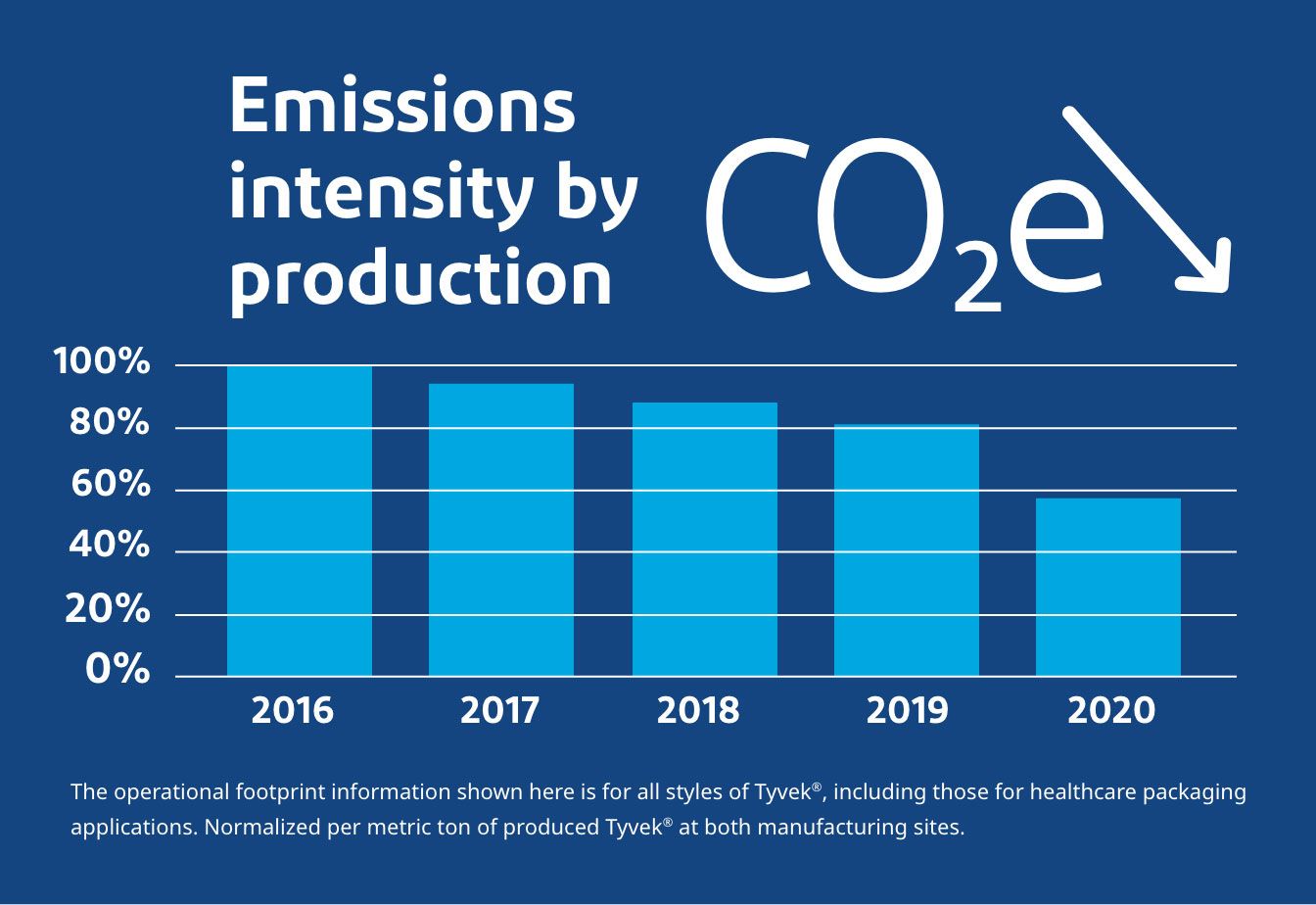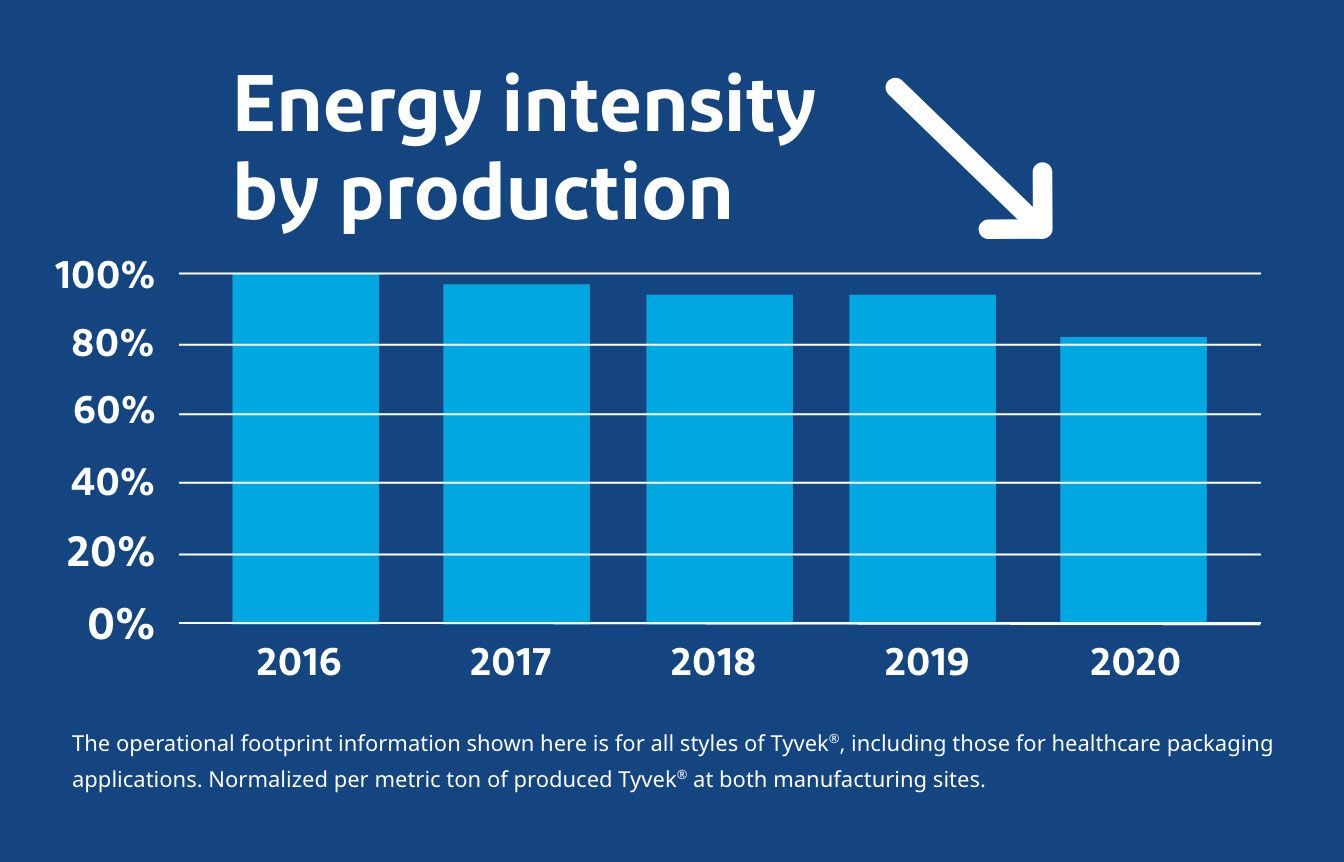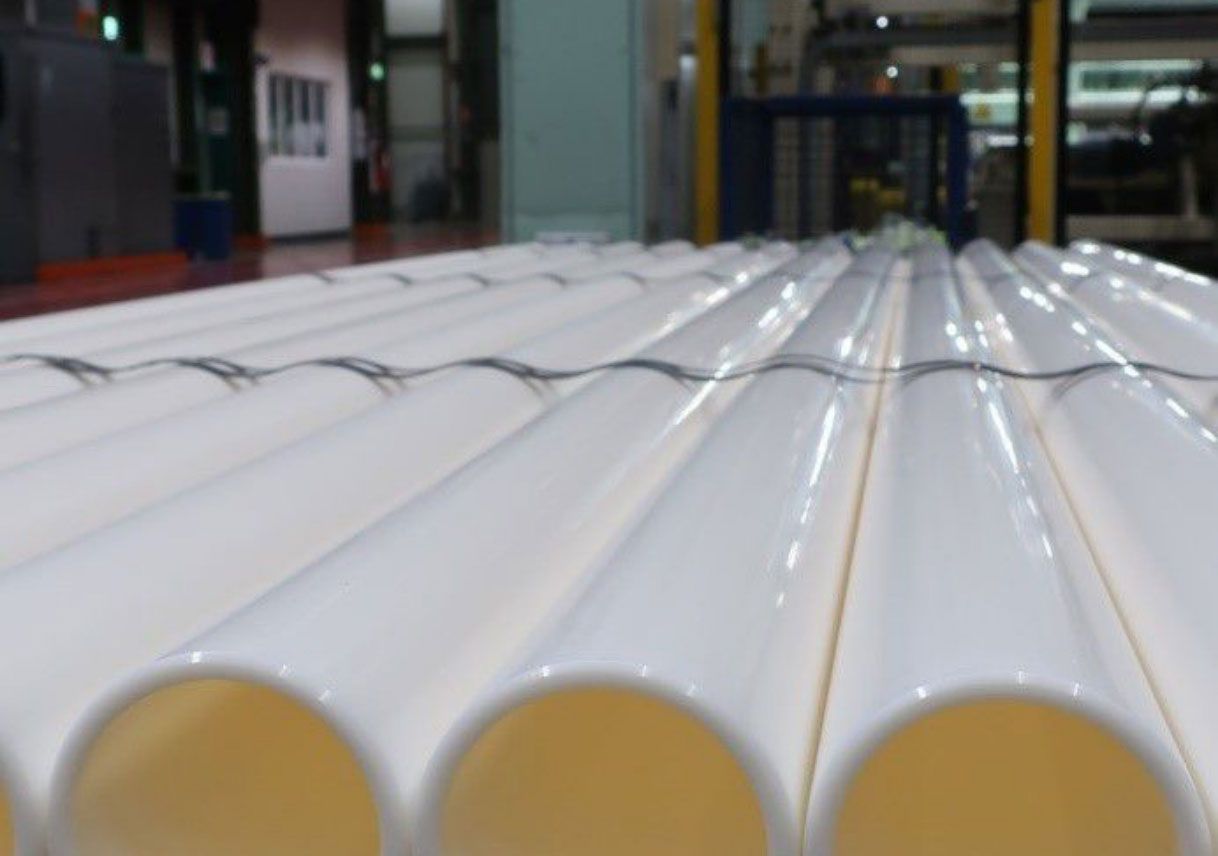

Continuously improving our operational
footprint on the environment
Progress towards continuously improving our operational footprint
We continue to strive for operational excellence and improved productivity while simultaneously reducing our environmental impact. Our Bold Energy Plan has enabled us to achieve more than 40% greenhouse gas (GHG) emission reductions over the past five years.
Energy and emissions
The primary mechanism we use for reducing our energy usage to manufacture DuPont™ Tyvek® is the Bold Energy Plan, a continuous improvement program developed by DuPont and launched company-wide in 2008 to improve energy efficiency and reduce emissions at its global manufacturing locations.
As part of the Bold Energy Plan, we have undertaken the following projects at our Tyvek® manufacturing sites since 2016:
- Overhauled utility production equipment to switch to more sustainable energy resources, which facilitated significant GHG emission reductions
- Optimized heat recovery systems
- Made improvements to heating, ventilation and air conditioning (HVAC) systems
- Upgraded to light-emitting diode (LED) lighting
We will continue to rely on the Bold Energy Plan as we strive for even greater energy savings and additional GHG emission reductions over the coming decade.


Waste
Our waste reduction efforts build on years of continuous improvement driven by the ISO 14001 certification process and by other compliance audits, as well as by our own internal standards and our vision of achieving zero waste—a goal we are very close to accomplishing.
As part of our commitment to implement a 4R (Reduce, Reuse, Repurpose, Recycle) waste reduction program at our manufacturing sites, we have established an onsite recycling facility alongside our Tyvek® manufacturing lines in Luxembourg.
The facility uses a sophisticated shredder-feeder-extruder combination system that can process all types of Tyvek® production waste and then pelletize it for reuse. This mechanical recycling system makes it easy and efficient to reprocess post-industrial waste back into HDPE granulates for reuse. As an example, the recycled HDPE granulates are used to produce plastic cores around which Tyvek® can be wound for storage and shipping. DuPont also has an ongoing partnership to give Tyvek® production waste in Richmond, VA, a second life in highly engineered water management products.

Recycled Tyvek® Is at the Core of Circular Solutions
DuPont works closely with Sonoco Plastics to create these winding cores.

Sustained by Recycling
DuPont also has an ongoing partnership with Advanced Drainage Systems (ADS) to give Tyvek® production waste a second life as highly engineered water management products.
Water
Another aspect of our global footprint is to understand where and how DuPont operations interact with local watersheds. We withdraw and purchase water from various local sources and entities to conduct business. Some of that water is treated and returned to a local waterbody; some is rendered in our manufacturing processes or used for other purposes, such as employee health and hygiene. As part of our ISO 14001 certification, we continuously monitor and strive to optimize our water consumption.
To gain additional insights, we used the World Wildlife Fund (WWF) Water Risk Tool in 2020 to model water stress. The WWF tool helps us assess water risks using an expanded set of parameters, such as reputation and regulatory risk, that may affect business continuity in the future.